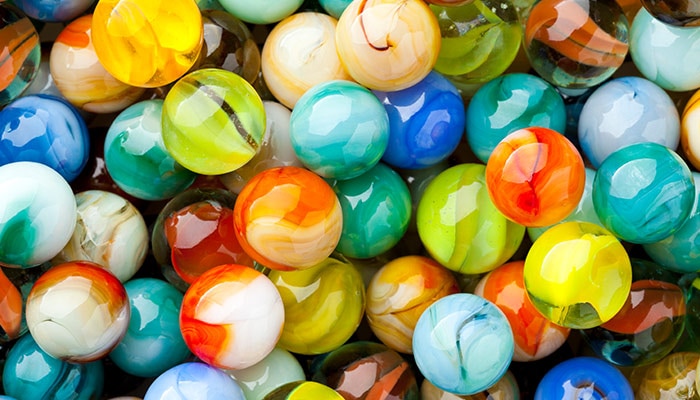While we believe that the books and resources recommended may be of value to you, keep in mind that these are suggestions only and you must do your own due diligence to determine whether the materials are appropriate and suitable for your use. PNC has no sponsorship or endorsement agreement with the authors or publishers of the materials listed.
TINKERING & MAKING

Marble Mazes
Children will tinker with marbles and tubing to investigate movement.

Lesson Objective
Children will tinker with marbles and tubing to discover how the shape and steepness of the tube affects movement.
Science
What You'll Need
- Pegboard – 3' × 4' pieces (available inexpensively at hardware or home improvement stores)
- Foam pipe insulation tubes – 1" diameter (available inexpensively at hardware and home improvement stores)
- Masking tape – 1 roll
- Plastic tie wraps - 8" length
- Large (5/8") marbles
What To Do
Note: Divide the children into groups of 4.
- Cut pieces of the tubing into different lengths.
- Give each group a few lengths of tubing and some marbles.
- Tell the children to tinker with these materials.
- Challenge them to try figure out how they can put the marble in one end of the tubing and have it roll out of the opposite end.
- Ask the children what they can do with the tubing to make the marble roll differently (see Guiding Student Inquiry).
- Demonstrate connecting different lengths of tubing using masking tape. Show children how to make loops, curves, spirals, and ramps.
- Assist the children with connecting their tube mazes to the pegboard with the tie wraps.
- Encourage children to try out the mazes created by other groups.
Resources
Home School Resources
Home educators: use these printable lesson PDFs to teach this lesson to your home schoolers. They're available in English and Spanish.
Content Provided By
Common Core State Standards Initiative – These lessons are aligned with the Common Core State Standards ("CCSS"). The CCSS provide a consistent, clear understanding of the concepts and skills children are expected to learn and guide teachers to provide their students with opportunities to gain these important skills and foundational knowledge [1]. Visit the CCSS


